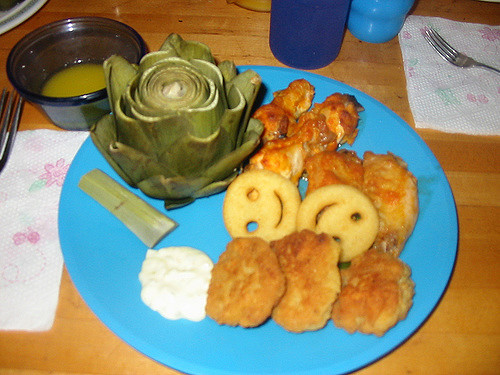
“Don’t it always seem to go
That you don’t know what you’ve got
‘Til it’s gone.”
~ Joni Mitchell
In 2007, I almost died in a bicycle accident.
I had a transcendent, life-changing near-death experience.
I knew I’d be okay. The emergency room doctors told me I’d be okay.
But I wasn’t.
I developed an array of health problems—an excruciating nervous system disorder (RSD), sensory sensitivities, and extreme food sensitivities. The prognosis changed to life in a wheelchair.
I knew my destiny was not to live in their wheelchair. Within six years I achieved a pain-free state using multiple modalities, including hypnosis. I learned to create feelings of health, comfort, peace, and joy from memories and my imagination. I cultivated joy in my everyday life. The achievement gave me unshakeable confidence in my body’s ability to heal. People who knew my most intimate struggles said I was a walking miracle. But I couldn’t fully take in the miracle because my food sensitivities had grown so much worse.
Everyone I knew wondered how such a “clean eater” could have such severe food sensitivities, including me. Before my accident, I ate cleaner than the average person but enjoyed a few junk foods like most people. My digestion wasn’t perfect, but it was good enough.
With the onset of such severe sensitivities, I eventually ate 100 percent organic and eliminated all of the common allergens: dairy, gluten, corn, soy, eggs, citrus, nuts, fish and shellfish, Still, even the healthiest foods made me ill, including the so-called gut-healing foods like bone broth and fermented foods. I couldn’t eat grains, nuts, seeds, fruits, oils, animal foods or many vegetables either.
No matter what I did, what I ate, and how many techniques I used to mobilize healing, my gut did not heal.
The research didn’t make me feel any better. Food sensitivities, according to Mayo Clinic, are not like life-threatening allergies, rather, they are “bothersome.” If you’ve ever experienced food sensitivities, you know they’re more than bothersome. After all, we need food to survive. And eating scared me.
I finally underwent food sensitivity testing. Soon after, I began a health coaching certification program so I could guide myself through this puzzle. With my results in hand, I learned to do an elimination diet. This particular approach allowed me to eat a three-day rotation of “safe” foods for one week. I could add new foods each week—one food at a time—when I felt good.
As I learned to navigate food that worked for me, my system began to calm down. I lost 15 pounds and could have fit into my high school jeans. What I lost were pockets of fat that I’d never been able to lose through diet or exercise. My meals had no salt, no herbs, and no spices, yet each bite burst with delicious flavor. I think I could taste my gratitude.
With the pleasure of food came a prayer of deep appreciation. At first, it was simple: “Thank you, God (or insert the spiritual energy you connect to in your life) for this delicious food, which I am able to eat, enjoy, digest, and absorb nourishment from to heal my body and live a healthy life.” I said this prayer aloud before every meal as I looked at my food with great love and humility.
When I introduced new foods, I felt like a picky child exploring what I liked and didn’t like. I no longer cared if a healthy food was “good for me” by outside standards. I only paid attention to how it made me feel. Sometimes a food failed miserably, at other times I got to add a new treasure to my growing diet.
Within a couple of years, I could eat fish again and gobbled up super-fatty wild-caught fish with greedy abandon. When potatoes came back into my life, I thought I’d died and gone to heaven. Then, after not being able to eat fruit for almost nine years, I could eat melons, raspberries, cherries, grapes, peaches and mangos. After so many years of deprivation, fruit tasted like the magical elixirs from my imagination.
As my menu grew, so did my gratitude until one day I realized how many people it takes to bring food to my table. Gratitude welled up for anything and everyone who had anything to do with my food. That meant thanking our planet Earth and countless people who provide related products and services.
My expanded prayer sounded like this:
“Thank you for this food, the Earth where it grows, the farmers who grow it, the workers who pick it, the trucks and the truckers who deliver it, the produce clerks who unpack and shelve it, the money I’ve earned to buy it, the clients and customers who pay me, the cashiers who ring me up at the grocery store, my home and appliances where I prepare it, my plate and utensils for eating it, my chair and table where I eat, my ability to taste and appreciate all the flavors, and my ability to swallow, digest, draw nourishment from, and eliminate whatever isn’t needed through the proper channels.” (It’s always a good thing when that last part of the digestive process is in working order.)
I’m still adding people to my gratitude prayer and foods to my diet.
I probably eat fewer types of foods than other people and may never eat any “fun” junk food again.
Some people feel sorry for me, but I don’t feel sorry for myself. (Okay, I have at times.) The truth is, having experienced such severe food deprivation and digestive dread, I feel intense gratitude for the bounty of each food, the history of how it reached my plate, and the healing power of life. If you stop to think about it for just a moment, in each bite of healthy food, there’s an entire world of people and things to be grateful for, without which that plate of food would not exist.
I look at people in my daily life now with much more love and gratitude than I did before. The produce guy stacking lettuce, the cashier ringing up my groceries, the semi-truck on the highway: these are my everyday heroes. Even the person walking down the street might somehow be connected to my health, survival, and well-being.
Opening up to this love and respect for each person’s service and contribution—now that was a blessing worth dying for.
~
Author: Sally Stone
Image: flickr/rahchel
Volunteer Editor: Pavita Singh/Editor: Ashleigh Hitchcock










Read 6 comments and reply